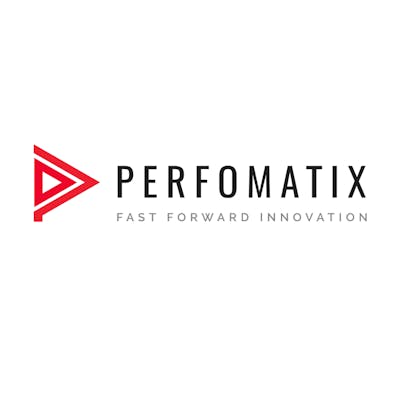What is RPA for banking? Banks may benefit from RPA by automating operations to decrease the number of manual activities required, increase compliance, reduce risk, and boost customer service. In addition, robotic process automation is best to financial institutions like banks since it does not necessitate new infrastructure and can be utilized by non-technical staff.
According to a recent survey, By 2023, it is predicted that banks may save a total of $447 billion through the use of AI-based technologies.

This trend is driven by the need to reduce costs and improve efficiency, the increasing availability of RPA tools, and the growing awareness of their benefits.
By automating routine tasks and freeing human workers to focus on more complex tasks, RPA for banking can improve their operations and better serve their customers. This article will explore how banks can use RPA to automate their processes and its potential benefits.
By Automating Reports
How can RPA for banking be useful in generating reports?
First of all, RPA has the power to compile information from several spreadsheets and databases into a unified report. If the report is to be given to management or regulators, it may be structured and delivered to them automatically. Automating the report-creation process using RPA helps financial institutions save time and money & boost accuracy and efficiency.
RPA in banking can help compliance officials process suspicious activity reports and assist personnel with report generation, such as SAR (suspicious activity reports). Officers now rely on NLP-capable software instead of manually reviewing lengthy paperwork. A system like this can automatically collect the correct information and put it on the SAR form.
Compliance standards require banks and other financial institutions to tell their board of directors about their performance and problems. Compiling and analyzing these reports is time-consuming and error-prone since they contain many data from many sources.
Robots can gather data from many different sources, organize it, and make error-free reports. It saves time and gives decision-makers accurate & up-to-date information that they can use to make better strategic decisions. This improves the organization’s performanc
Perfect for Customer Onboarding
Did you know that globally, the KYC process takes up to 48 million on average? Not to mention the average time of 30 days.
RPA helps banks to onboard new customers. It could help banks quickly collect and check client information, such as IDs and account histories. Since staff won’t have to go through this data by hand, it will save time and effort.
RPA can also use chatbots and computer vision to pull useful information from unstructured voice, text, and pictures. AI models can use confidence levels to determine how risky something is and look for application problems. Bots can also send proactive messages to customers and keep them up to date on how their onboarding is going.
Accounts Payable becomes Easy to Manage
Accounts payable are the unpaid bills a company owes to vendors and suppliers for goods and services. Bank account payable management involves bill tracking and timely payment.
Robotic process automation (RPA) could help banks save time and effort by automating accounts payable tasks like checking invoices, balancing books, and making payment reports. Using RPA, financial institutions may streamline their accounts payable processes, reduce manual labor, and increase the reliability of their data.
RPA in AP can help reduce the number of man-hours spent on invoice processing. For example, robotic process automation (RPA) can automatically pull information from invoices and add it to cooperative databases, such as the bank’s accounting software.
Instead of entering the data by hand, workers can free up some time to concentrate on other, more productive endeavors. In addition, RPA may be useful for account reconciliation automatically, which can improve the reliability of the bank’s data. This could reduce mistakes and inconsistencies in accounts payable, making the process run more smoothly.
Fraud Detection
RPA makes it easier for banks to find and stop fraud by finding suspicious transactions in real-time.
RPA may look at consumer transactions and account activity data to find patterns or oddities that might point to fraud. By gathering data and documents for examination, RPA can automate the investigative process. RPA helps banks identify fraud and decrease financial losses.
Also, RPA can automate banks’ fraud detection and investigation processes. It can automatically inform the bank’s fraud investigation team or the client about suspicious activity and collect & analyze the correct data.
Automating these activities helps banks detect fraud faster. This reduces financial losses and improves fraud investigation efficiency.
AML (Anti-Money-Laundering)
RPA can aid AML efforts in several ways. Examples:
Data Entry and Verification: RPA can efficiently enter and verify data in AML systems. This speeds up customer onboarding and reduces mistakes.
Real-time transaction monitoring: RPA can highlight questionable transactions. Financial institutions can detect and report dubious behavior faster.
Case Management: RPA can automate document retrieval and processing, speeding up AML case investigations.
Reporting: RPA automates AML report generation, saving time and reducing mistakes.
RPA can make it easier for financial organizations to follow AML laws, make fewer mistakes, and improve their reporting.
Loan Processing
Robotic process automation (RPA) does several tasks to speed up and automate the loan processing workflow. RPA can put information from loan applications into systems that process them and check whether the data is correct and complete.
A quicker application procedure with fewer mistakes is possible with this method. Credit checks and “Know Your Customer” (KYC) checks are just two examples of routine tasks that can be done automatically with robotic process automation (RPA).
This makes it easier for financial institutions to find borrowers who can pay back their loans and follow all the rules. Also, RPA could monitor loan transactions in real-time and find suspicious ones, which would help financial institutions fight fraud.
Lastly, RPA can save time and reduce mistakes by automating the process of making reports about loan processing. These reports include monthly statements and default reports. As a whole, RPA may help financial organizations handle loans more quickly and accurately, increasing efficiency.
Bye-bye to age-old ledger management
For banks, robotic process automation (RPA) can be revolutionary for tasks like ledger account maintenance.
Imagine being able to easily enter transactions into your ledger, have them instantly matched to internal data, and solve any problems with just a few clicks of your mouse.
That’s where RPA comes in. By automating many of the steps that were once done manually, banks may save time, reduce the chance of making mistakes, and improve the quality of their reports.
Also, RPA can be useful to make ledger activity reports, like monthly or quarterly statements, with just a few simple instructions. When robotic process automation can take care of everything, there’s no reason to waste time or money on manual labor. Robots can take care of accounting, so your employees can focus on more critical tasks.
Mortgage management
A mortgage lender must look at several financial records to ensure that the borrower has enough money to repay the loan. RPA is helpful because of the massive amounts of data and documents that must be scanned for verification. Tasks like application interaction, data extraction, and report generation may be automated with RPA.
Robotic process automation (RPA) can quickly and accurately gather information from different sources, like loan applications and credit reports. This information may be checked and entered directly into the relevant sections of the mortgage processing program, saving a ton of time and reducing the likelihood of mistakes.
In the mortgage industry, robotic process automation (RPA) can help you speed up the application and approval stages of the loan process. This is primarily why the mortgage industry is increasingly adopting sophisticated automated systems.
With RPA, we can reduce time spent on reporting and improve efficiency. RPA’s rule-based algorithms provide reliable information for business expansion.
The robot makes it possible to look over all relevant information carefully. This means it not only can improve the manual tasks, but the work of receiving information can also be fully automated. Further, it aids lenders in assessing risk and taking appropriate countermeasures.
Robotic process automation (RPA) can streamline the inspection of loan paperwork and related tasks. RPA bots can reduce the risks.
Using RPA in mortgage processing can increase productivity and accuracy, speeding up the time it takes to get a loan and making borrowers happier.
Account closure
Even though it doesn’t make money, closing accounts is essential for financial institutions because it helps them keep accurate records, prevent fraud, and follow the rules. However, closing accounts manually can be tedious and take a lot of time, which is why there is RPA (Robotic Process Automation).
RPA bots can help financial institutions keep track of these accounts, notify the right people and the client, and set up follow-up phone calls when the client has sent in all the required paperwork. For example, customers who don’t provide KYC documents can be watched, and the bank can be warned.
Final Note…
In conclusion, RPA for banking has the potential to improve efficiency and accuracy in the banking industry significantly.
If your bank is considering implementing RPA, Performatix can help. Performatix is one of the best companies offering RPA solutions, so it has the knowledge and experience to help your bank implement RPA. We can give your bank the consulting, planning, implementation, and support it needs to use RPA successfully.
For more clarification about us, visit our success stories section to find out more about some of the startups which made it big with us.

